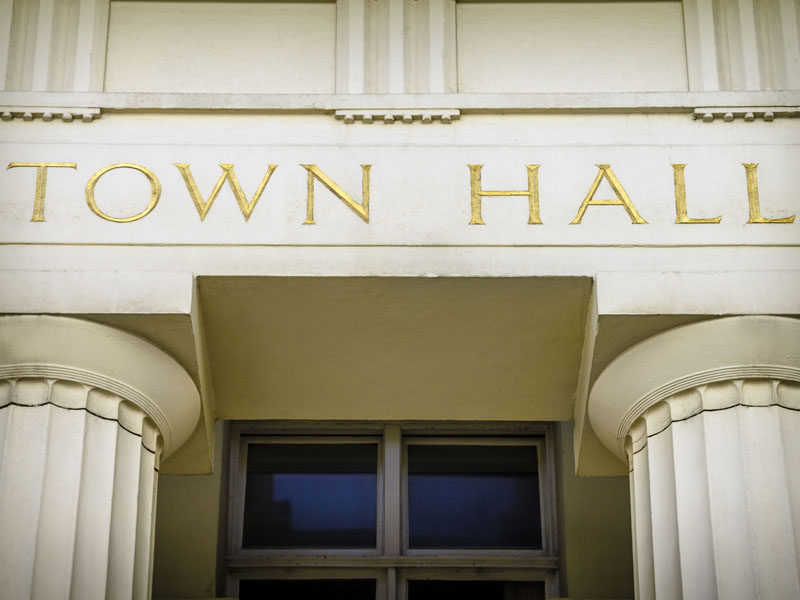Leadership Conference Town Hall Covers Gamut of Key Issues
May 17, 2021, 3:42 p.m. News Staff — On April 30, AAFP leaders hosted a virtual Annual Leadership Conference Town Hall meeting that provided overviews of the Academy’s efforts on behalf of members across a variety of topics, including payment, telemedicine, workforce and COVID-19.

Payment
Years of AAFP advocacy efforts culminated in a roughly 9% increase in reimbursements for evaluation and management codes in the 2020 Medicare physician fee schedule. Academy president-elect Sterling Ransone, M.D., of Deltaville, Va., said employed family physicians should work with their employers to make sure that these changes are reflected in their compensation.
AAFP EVP and CEO Shawn Martin said the Academy is developing letters that individual physicians and groups of physicians can use with their employers to address this issue. He also pointed out that summer is a time when many physicians will be renewing employment contracts, which offers “an opportunity to think about advocating for yourself or your group.”
The AAFP initially expected a payment increase of at least 13% from the 2020 fee schedule, but ultimately, the implementation of a primary care add-on code, G2211, was delayed.
“Our staff did an incredible job in the fall and early winter to maintain the E/M coding changes,” said Ransone, who noted that the payment increase remains the largest for primary care in the history of Medicare. The new G code is expected to be implemented in 2023, he said.
Telemedicine
Ransone said roughly 10% of family physicians were using telemedicine before the pandemic, but that number has swelled to more than 90%. “It’s what we had to do for patients to keep them healthy,” he said of the rapid adoption.
Story Highlights
Ransone said the Academy is lobbying for the permanent expansion of payment increases for telemedicine visits to ensure adequate telehealth reimbursement to allow virtual care to continue. He also said the AAFP is fighting “carve outs” by insurance companies that are contracting telemedicine arrangements with third parties that exclude patients’ primary care physicians.
“Telemedicine and telehealth are best utilized and best deployed as part of comprehensive practice in ongoing continuous relationship care between a physician or care team and a patient,” Martin said. “We need to use technology to support continuous relationships with patients.”
In a somewhat related question, Martin was asked for the Academy’s stance on the Interstate Medical Licensure Compact. Martin said the AAFP has “largely deferred to state chapters” on the issue because state governments have jurisdiction on the issue.
Workforce
AAFP Board Chair Gary LeRoy, M.D., of Dayton, Ohio, applauded his fellow family physicians for adopting telemedicine and filling vital roles in ERs and elsewhere in response to COVID-19.
“That’s the secret sauce of what we do, adapting to whatever situation,” he said. “Our young folks in medical school are watching us; the whole world is watching us and seeing what we do as family physicians during the pandemic.”
LeRoy said the spotlight on frontline physicians may have helped family medicine in the National Resident Matching Program Main Residency Match. When results were released in March, the specialty marked 12 years of growth and 10 consecutive years with an all-time record number of students (4,493) who matched into family medicine.
Asked about rural practice recruiting, AAFP president Ada Stewart, M.D., of Columbia S.C., pointed to AAFP advocacy efforts reflected in the American Rescue Plan, including increased funding for community health centers, the National Health Service Corps and the Teaching Health Center Graduate Medical Education program.
“It’s really important we continue to advocate for rural physicians,” said Stewart, noting that those programs can help draw individuals to rural medicine.
Meanwhile, Martin said the Academy now has more than 15,000 osteopathic members and is working to develop more unique products and services targeted to that group.
COVID-19
Stewart highlighted the numerous steps the AAFP has taken to support members during the pandemic, including a regularly updated COVID-19 webpage with information and resources, town hall meetings with subject matter experts, email updates, free CME, an extension of the 2020 dues deadline, patient resources and advocacy efforts related to telemedicine, blogs from family physicians, financial relief, and more.
“In the midst of it all, the Academy has and will continue to work on behalf of you, our members, to advocate for policies and provide you with the resources that will allow you to focus on what you do best — caring for your patients and communities.”
LeRoy said the Academy’s Member Satisfaction Survey showed increased satisfaction with Academy tools and services.
“That’s phenomenal during a pandemic, with all this distance, that members appreciate we were there for them and they were not alone,” he said. “As long as the AAFP is here, you’ll never be alone.”